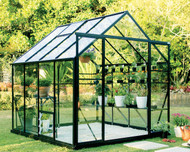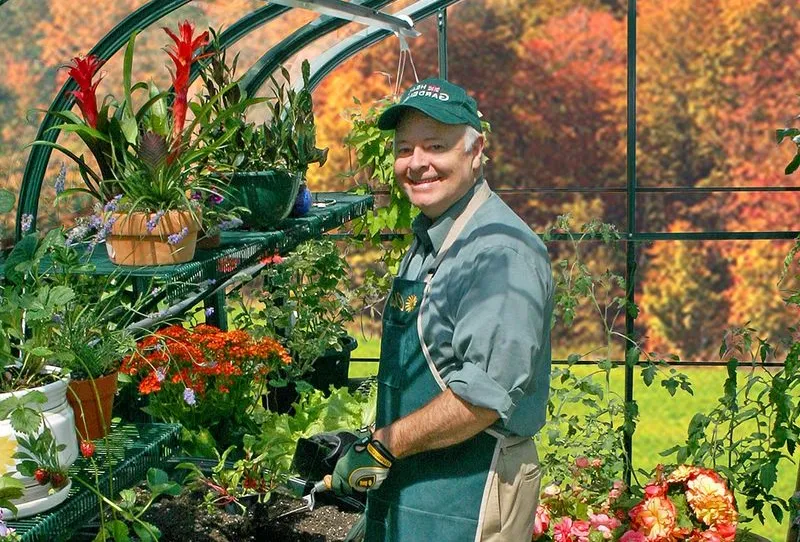Tips for Protecting Your Greenhouse and Plants This Winter
As the chill of winter begins to take hold, it’s important to think about how you can protect your greenhouse plants from the damaging effects of frost and the harshness of winter weather. The greenhouse is a vital refuge for your plants, providing essential protection from the extreme cold, frost, and the often unpredictable nature of winter weather patterns.
But simply having a greenhouse isn’t enough; it requires careful preparation and specific measures to ensure it’s fully equipped to handle the winter season. This means using various strategies and adjustments to maintain the proper environment inside the greenhouse, safeguarding your plants against the potential dangers of the cold season.
As you prepare your greenhouse for winter, focus on insulation, controlling the temperature, and maintaining the best possible environment to ensure your plants continue to thrive.
Challenges Winter Poses to Greenhouses and Plants
Winter brings sub-zero temperatures in many regions, posing challenges for greenhouse owners. Addressing these issues effectively, including keeping the right temperature and providing enough light, is crucial to maintaining the health of your greenhouse plants during these cold months.
-
Temperature control. Different plants have specific temperature needs, but generally, maintaining a greenhouse temperature between 50-70°F is advisable. Prolonged exposure to temperatures below 50°F can cause plants like tropical and citrus to enter dormancy or suffer cellular damage.
-
Light management for photosynthesis. Winter days bring fewer and weaker sunlight hours. This means less light is available for photosynthesis, reducing plant growth.
-
Humidity and ventilation. Winter air tends to be drier, impacting your greenhouse soil hydration and plants’ transpiration. The ideal greenhouse humidity levels range from 65-75% at night and 80-90% during daytime, so you need to control the internal environment within these strict levels to prevent desiccation, rot, fungal growth, plant disease, and mold.
Insulating Your Greenhouse for Winter
Adequate insulation is crucial in preserving a consistent temperature, conserving energy, and fostering optimal conditions for healthy plant growth. Seek out materials that raise the greenhouse’s R-value, a metric used to gauge a material’s thermal resistance and its insulating capacity. A higher R-value signifies superior insulation, resulting in more efficient heat retention and reduced energy costs.
Common types of greenhouse insulation include:
-
Bubble wrap. Specifically designed for greenhouses, this is an affordable and effective option. It traps air in its bubbles, creating an insulating layer while letting light through.

Charley’s Greenhouse Bubble Insulation is designed to fit any greenhouse glazing and reduce heating costs by up to 35%. Unlike ordinary bubble packing, it features clear, large bubbles and a durable, nylon-reinforced backing, ensuring optimal light diffusion and insulation. Easy to install, it boosts glazing R-Value by 1.6 to 2.1 and lasts 3-4 years.
-
Polycarbonate panels. With their multi-layered structure, polycarbonate panels create an effective thermal barrier, trapping heat inside the greenhouse. This design reduces heat loss, ensuring a stable, warm environment for plants during cold winter months.
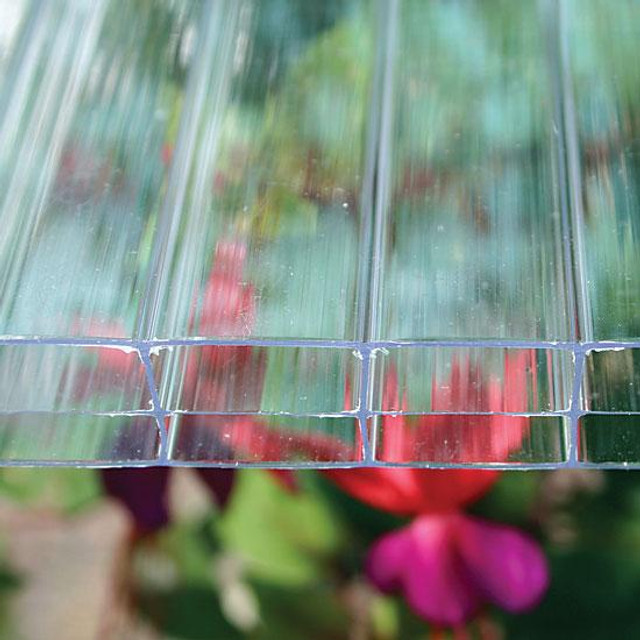
Charley’s 16mm (⅝") Polycarbonate Sheets are an excellent choice for solid greenhouse insulation. The TripleWall sheet, with its wider internal rib spacing, offers an appealing transparent look and an R-value of 2.50, enhancing thermal efficiency.
The Super 5X-Wall Storm version, boasting the highest strength and an R-value of 2.78, is designed to withstand extreme weather, including high winds and hail, thanks to its additional internal ribs and structural X webbing. Both variants are available in clear, opal, and bronze options for different light transmissions and reduced glare.
-
Reflective thermal liners. Reflective thermal foil sheets are beneficial for insulating greenhouses in winter as they reflect heat back inside the structure, reducing heat loss.
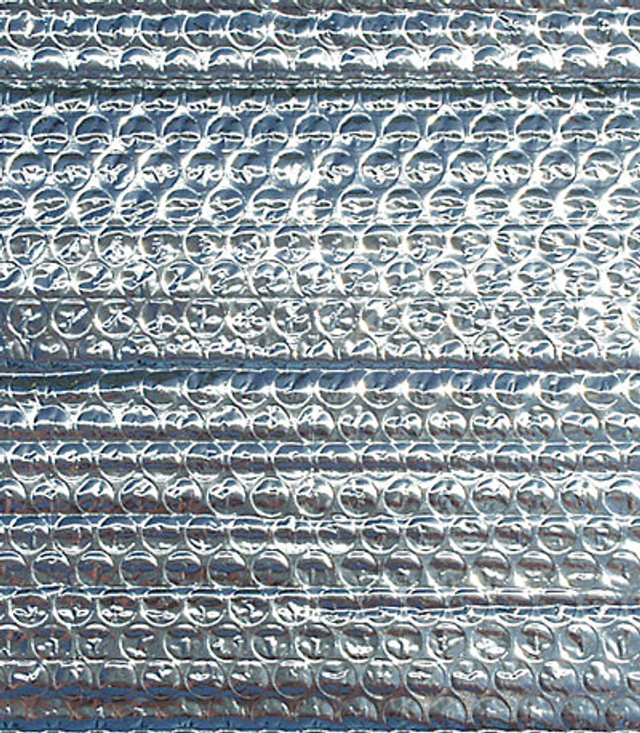
Reflectix Insulation, a multi-layered reflective solution, is ideal for enhancing your greenhouse’s warmth and light levels. It combats four types of heat loss - radiant, conductive, convective, and infiltration - while boosting light reflection.
This 5⁄16" thick insulation comprises aluminum foil and polyethylene layers, including a bubble pack center, ensuring strength and an increased R-value of 1.6 to 3.7. Easy to cut and install, Reflectix is perfect for the north wall or roof of single-glass greenhouses.
Ventilation Considerations
Even during the colder winter months, maintaining a consistent influx of fresh air remains crucial to prevent problems like mold and mildew, which thrive in stagnant and humid environments.
However, balancing ventilation with maintaining a warm enough environment for your plants can be tricky. You need to allow enough air exchange to keep the atmosphere inside the greenhouse healthy, but not so much that it causes a significant drop in temperature.
This often means opening vents or doors for short periods during warmer parts of the day or using automated ventilation systems that adjust based on the greenhouse’s temperature and humidity levels. Proper winter ventilation helps control humidity and ensures that your plants have access to the fresh carbon dioxide they need for photosynthesis.
To optimize your greenhouse’s ventilation in winter, try some of the following strategies:
-
Install automated ventilation systems. Use thermostatically controlled ventilation systems. These systems automatically open and close vents based on the internal temperature and humidity levels, ensuring optimal air exchange without significant heat loss.
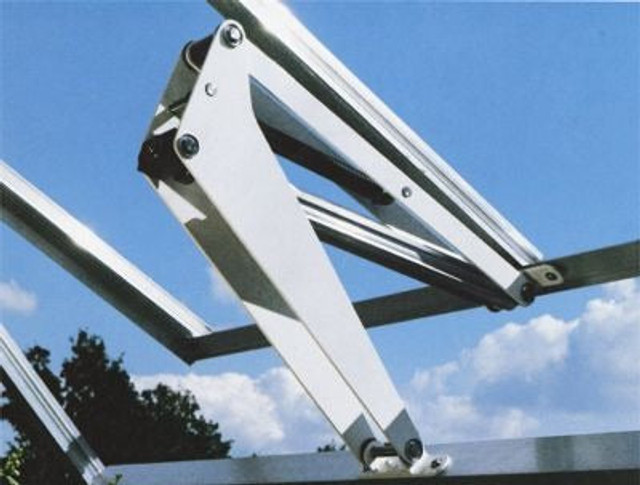
The Bayliss MK7 Super Solar Vent Opener is a solar-powered solution for automating ventilation in your greenhouse. It is designed to handle heavy, double-glazed vents and can lift up to 35 lbs. Its unique aluminum power tube with internal and external fins ensures efficient heat exchange for a quicker response.
This opener starts functioning at internal temps between 60°F and 75°F and can open vents up to 15", making it ideal for greenhouses in moderate climates.
-
Use circulation fans. Position circulation fans strategically within the greenhouse to evenly distribute heat and prevent cold spots. This helps maintain a consistent temperature and reduces the risk of plant diseases caused by poor air circulation.
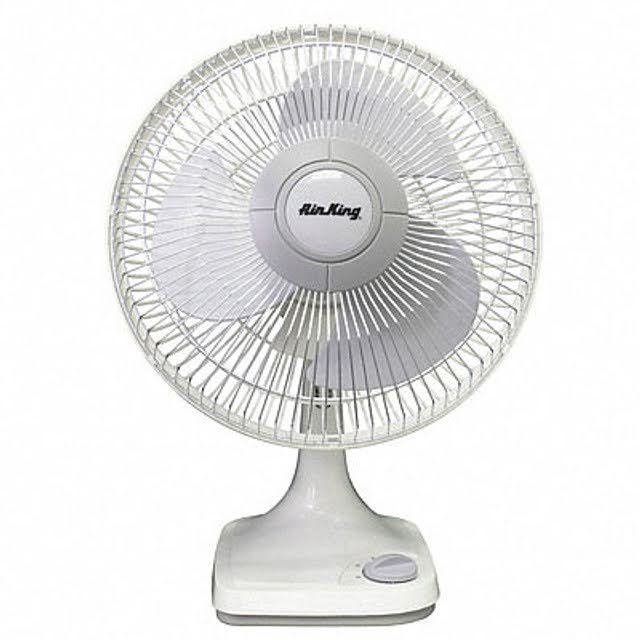
The Bench Top Oscillating Fan is a versatile tool for maintaining air circulation and preventing stagnant air and related plant diseases. This 12" fan, with a 3-speed selector and a 90° oscillating mechanism, ensures even air distribution. It’s designed for easy placement on benches or tables and features adjustable airflow direction.
Constructed with a tough ABS plastic blade and plated steel guard, it includes a 6 ft. grounded power cord and operates on 120 volts. The fan offers airflows of 930, 780, and 620 cfm at varying speeds.
-
Timed manual venting. If automated systems are not an option, manually open vents or doors for short periods during the warmest part of the day, typically around 3 p.m. This allows for air exchange without lowering the internal temperature. Keeping these openings brief and consistent can help maintain a balance between fresh air intake and heat retention.
Temperature Control Strategies
Managing the temperature in your greenhouse during winter is essential for the survival and growth of your plants. The key is to maintain consistent warmth, even as outside temperatures drop. This often involves using heaters, especially at night when the temperature reaches below zero. Thermostats are also invaluable for setting and maintaining a specific temperature range.
Implement the following guidelines to establish a consistent environment that ensures the well-being of your plants throughout the winter season.
-
Install a reliable heating system. Choose a heating system appropriate for your greenhouse size and the specific needs of your plants, and evenly distribute heat throughout the space. Options range from electric heaters to gas-burning units.
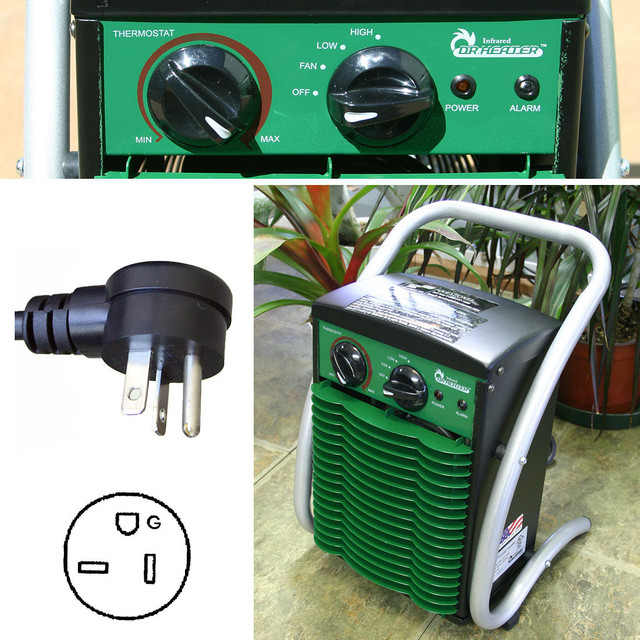
Charley’s 240-Volt Greenhouse Heater features a precise hydraulic thermostat with an external sensor for accurate temperature control. The heater is built with heavy-duty components, including a thick coil heating element and a powder-coated steel cabinet. Its moisture-resistant design includes an enclosed, permanently lubricated fan motor and a water-shedding cabinet to protect controls.
This high-capacity heater also offers a wide thermostat range (32°F to 104°F), multiple function controls, and safety features like an automatic thermal reset and alarm indicator light.
-
Use thermostats and sensors. Use thermostats and temperature sensors to maintain a consistent climate. These devices can automatically adjust the heating to keep the temperature within the ideal range for your plants, preventing harmful fluctuations.
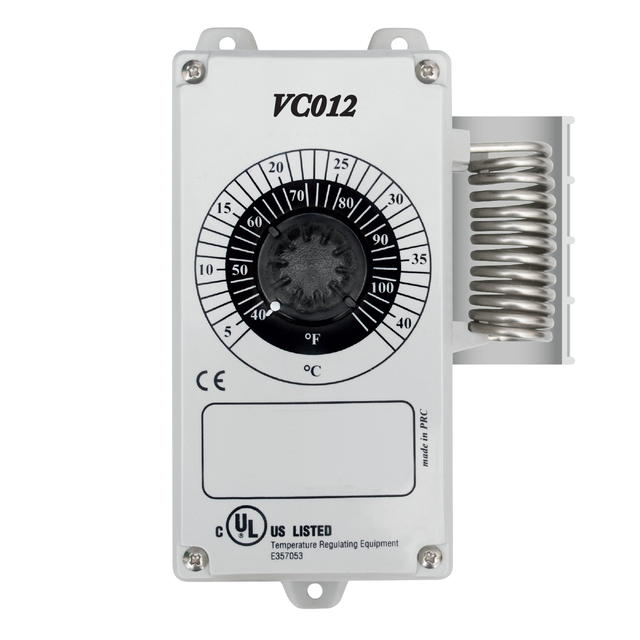
Charley’s Greenhouse Thermostat is designed to control fans or heaters automatically, featuring a water-repellant case perfect for moist greenhouse conditions. Its external stainless steel sensor ensures quick, accurate temperature responses.
The user-friendly dial, marked in 2° increments for Celsius and Fahrenheit, allows easy setting and reading. It covers a temperature range of 40° to 100°F and is rated for 14 amps, 1500 watts, and 120 volts.
Lighting and Your Winter Greenhouse
Plants rely on light for growth and photosynthesis, which is vital for their health and development. With winter’s shorter and often cloudier days, more than natural sunlight may be required to meet their needs.
Your plants can benefit from artificial lighting to compensate for the lack of natural light. LED grow lights are popular due to their energy efficiency and the broad spectrum of light they provide. Fluorescent lights are another option, especially for seedlings and low-light plants. These artificial sources can be used to extend the daylight hours or as a complete substitute for natural light on particularly dark days.
Here are some recommendations to assist you in optimizing light exposure during the winter:
-
Clean the glazing. Regularly clean the greenhouse’s glass or plastic glazing to ensure maximum light penetration. Dirt and grime can reduce the amount of light entering the greenhouse.
-
Strategic plant placement. Arrange plants so that taller varieties don’t shade smaller ones. Use shelving and tiered plant stands to make the most of the available space and light.
-
Install grow lights. Grow lights simulate sunlight by emitting a full spectrum of blue and red light frequencies vital for photosynthesis and plant growth.
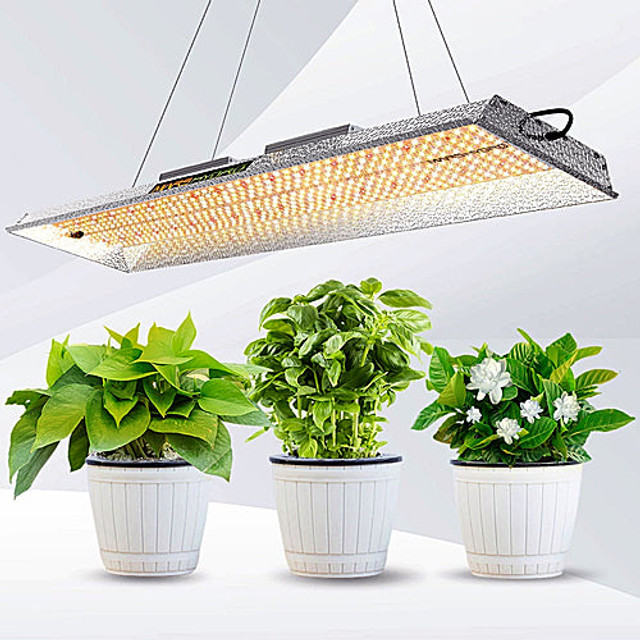
The Mars Hydro TSL-2000 LED Grow Light is designed for low power consumption, drawing just 300W while providing extensive coverage for vegetative growth and flowering. This light features a patent reflective hood design, ensuring maximum light distribution.
It emits a full spectrum, mimicking natural sunlight, and includes dimming and daisy chain capabilities. With a lifespan of 50,000 hours, the TSL-2000 is an energy-efficient choice, ideal for achieving high yields in a compact space.
Managing Humidity and Ventilation
Managing humidity in a greenhouse is a delicate balancing act, especially during winter when the goal is maintaining warmth without inviting mold and mildew. These fungi thrive in moist environments, so controlling humidity is crucial for plant health.
In addition to providing adequate ventilation to exchange moist interior air with dry outside air, try some of these methods to manage moisture levels in your greenhouse:
-
Use a dehumidifier and a humidifier. Dehumidifiers extract water from the air, maintaining a dry environment less conducive to mold and mildew. Humidifiers can add moisture to the air in very dry conditions, preventing plant stress. Use these devices in tandem with hygrometers to maintain an ideal humidity level.

The Mondi Mini Thermo-Hygrometer, with its cutting-edge technology, offers real-time temperature and humidity readings critical for successful plant propagation. It is easy to mount inside your greenhouse and displays current conditions and minimum and maximum history.
Its range spans from -9.9°C to 50°C and 25% to 98% RH, making it an indispensable tool for monitoring the precise climate needed for various plants.
-
Supplement soils with moisture-absorbing materials. Materials like clay pebbles ensure the greenhouse’s soil and plants aren’t excessively watered. Also, try watering in the morning rather than in the evening; this gives excess moisture time to evaporate during the day.
Preparing for Extreme Weather Events
Preparing your greenhouse for extreme weather can help protect your investment and the plants inside. Whether facing heavy snowfall, frost, or high winds, a few simple steps can ensure your greenhouse withstands these challenges:
-
Structural checks. Regularly inspect your greenhouse structure for any weaknesses or damages. Ensure that all joints are tight and the covering material is secure.
-
Snow and frost management. Reinforce the greenhouse roof to withstand heavy snow loads, and use heating cables or mats to prevent frost buildup.
-
Wind preparedness. Secure the greenhouse with additional anchoring if located in a high-wind area. Install windbreaks like hedges or fences to reduce wind impact.
Help Your Plants Thrive This Winter
As you gear up for winter, remember that a little preparation goes a long way in ensuring your greenhouse remains safe for your plants. With the right strategies and tools, you can confidently navigate the colder months.
Explore the range at Charley’s Greenhouse and Garden for all your greenhouse needs, from insulation solutions to advanced heating systems. Our products are designed to help protect and nurture your greenhouse this winter.

